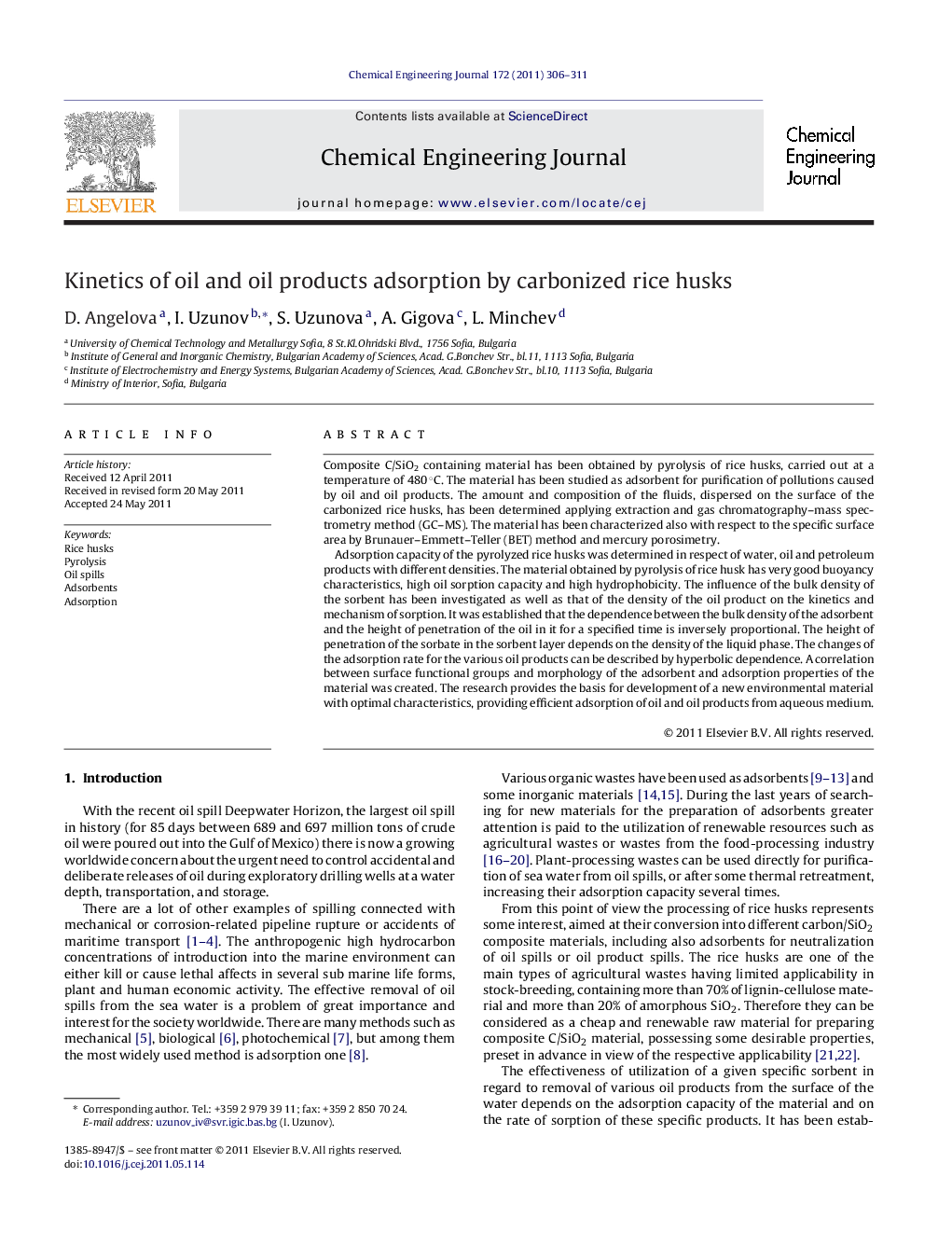| Article ID | Journal | Published Year | Pages | File Type |
|---|---|---|---|---|
| 151055 | Chemical Engineering Journal | 2011 | 6 Pages |
Composite C/SiO2 containing material has been obtained by pyrolysis of rice husks, carried out at a temperature of 480 °C. The material has been studied as adsorbent for purification of pollutions caused by oil and oil products. The amount and composition of the fluids, dispersed on the surface of the carbonized rice husks, has been determined applying extraction and gas chromatography–mass spectrometry method (GC–MS). The material has been characterized also with respect to the specific surface area by Brunauer–Emmett–Teller (BET) method and mercury porosimetry.Adsorption capacity of the pyrolyzed rice husks was determined in respect of water, oil and petroleum products with different densities. The material obtained by pyrolysis of rice husk has very good buoyancy characteristics, high oil sorption capacity and high hydrophobicity. The influence of the bulk density of the sorbent has been investigated as well as that of the density of the oil product on the kinetics and mechanism of sorption. It was established that the dependence between the bulk density of the adsorbent and the height of penetration of the oil in it for a specified time is inversely proportional. The height of penetration of the sorbate in the sorbent layer depends on the density of the liquid phase. The changes of the adsorption rate for the various oil products can be described by hyperbolic dependence. A correlation between surface functional groups and morphology of the adsorbent and adsorption properties of the material was created. The research provides the basis for development of a new environmental material with optimal characteristics, providing efficient adsorption of oil and oil products from aqueous medium.
► The solid residue of the pyrolyzed rice husks is a composite C/SiO2 containing material. ► The morphology and surface functionalities make the material a suitable adsorbent for cleaning of oil spills. ► The adsorption capacity and sorption kinetics depend on the adsorbent granulometry and petroleum products density. ► The thickness of the sorbent layer depend on the granulometry of adsorbent. ► The higher the density of the oil product the lower is its height of penetration in the layer of adsorbent.
